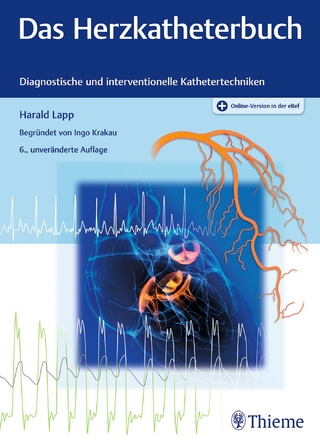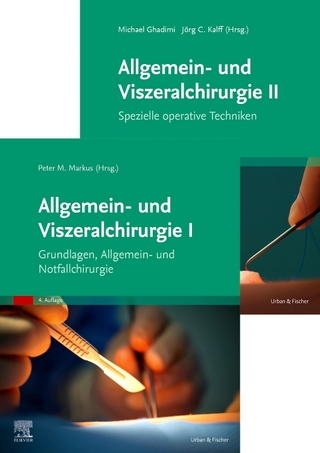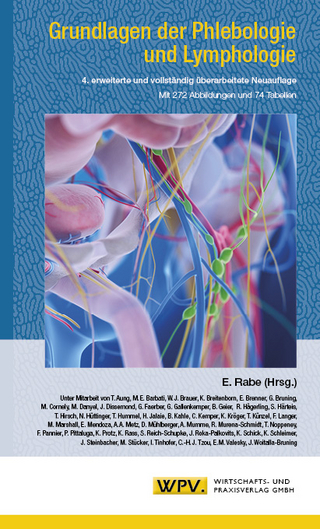
Mechanical Ventilators for Non-Invasive Ventilation
Nova Science Publishers Inc (Verlag)
978-1-5361-7435-9 (ISBN)
Hospital General Universitario Morales Meseguer, Intensive Care Unit and Non Invasive Ventilatory Unit, Molina Segura- Murcia, Spain
Preface; Physics of Positive Pressure: Technology; Negative Pressure Ventilators: Technology; Positive-Pressure Respiration: Basic Pulmonary Ventilation and Physiology; Volume and Pressure Relationships during Spontaneous Breathing; Respiratory Muscle Performance (Strength and Fatigue): Evaluation and Monitoring; How Non Invasive Ventilation Conditions Cardiac Function; Interface Technology: Influence on Patient-Ventilator Interaction: Face Mask, Helmet and Mouthpiece; Noninvasive Ventilation Interface: Influence on Patient-Ventilator Interaction; How to Evaluate Optimal Mask Fitting; Equipment Design Non-Invasive Ventilators: Engineering and Algorithms in Critical Care Non-Invasive Ventilators; Home Mechanical Ventilators: Accuracy of Positive Pressure, Flow Measurements, Tidal Volume (VT) and Leak Measurements; Non-Invasive Ventilation Modes: Volume- and Pressure-Limited Ventilation; Pressure Support Ventilation Mode (PS): Settings and Implications during Non-Invasive Ventilation; BIPAP (Bilevel Positive Airway Pressure): Settings and Implications during Non-Invasive Ventilation; Timed Mode: Technology, Settings and Indications; Timed Effect I:E Relation: Setting and Clinical Implications; Back up Rate Ventilation: Technology, Settings, and Indications; Automated Modes of CPAP (Auto-CPAP): Technology, Settings, and Indications; Volume Assured Pressure Support Mode: Technology, Settings, Indications; Adaptive Servo Ventilation (ASV) Mode: Technology, Settings and Indications; Neurally Adjusted Ventilatory Assist (NAVA): Technology, Settings and Indications; CPAP Device Technology: Equipment and Recommendations; Bi-Level Portable Non-Invasive Mechanical Ventilators: Algorithms, Equipment Design and Models; Built-In Software Technology of Home Ventilators; How Does Your NIV Mechanical Ventilator Work during the Night?; Intermittent Abdominal Pressure Ventilator (IAPV): Technology and Clinical Implications; Oxygenation Technology Applied in Mechanical Ventilators: Recommendations and Options; NIV CPAP Flex Mode; Algorithms, Equipment Design, Models, and Patient Interface; Airway Pressure and Pressurization Waveforms during Non-Invasive Ventilation: A Key Practical Approach; Airflow Waveforms during Non-Invasive Ventilation: A Key Practical Approach; Tidal Volume during Non-Invasive Ventilation: Key Practical Approach; Transcutaneous Carbon Dioxide Tension (ptCO2) and Oxygen during Sleep: Clinical Implications; Leaks: Concept, Monitoring and Clinical Interpretation; Leakages: A Practical Approach; Classification and Specific Types of Asynchrony during Non-Invasive Ventilation; Patient-Ventilator Asynchrony: Pathophysiology; Missed Efforts: Concepts, Diagnosis and Interpretation during Non-Invasive Ventilation; Non-Invasive Ventilation: Triggering Delay and Workload Practical Recommendations; Inspiratory Triggering Sensitivity: Practical Recommendations for Impact of Non-Invasive Ventilation Settings; Impact of Premature Cycling: Practical Recommendations; Automated Cycling during Non-Invasive Ventilation: Implications for Ventilator Synchronization; Patient Ventilator Asynchrony, Leaks and Sleep in Non Invasive Ventilation; Asynchrony Index: Non-Invasive Ventilation (NIV) for Respiratory Failure; Asynchrony During NIV: How to Measure Discomfort and Distress and Key Practical Recommendations; Synchronization Ventilator: Patient during Noninvasive Ventilation; Asynchrony during NIV: Predictors of Response in NIV Patient Interaction; Global Technology Approach to Prevent Asynchrony and Improve Patient-Ventilator Interaction in Non-Invasive Ventilation; Non-Invasive Ventilators: Registry Functions and Clinical Implications; Alarms Technology during Non-Invasive Ventilation: Key Practical; Non-Invasive Ventilation: Key Technical Practical Aspects of Monitoring in Hospital Respiratory Units Outside ICU; Evaluation of Nocturnal Ventilation: Polysomnography with Transcutaneous Capnography; Humidification during Non-Invasive Ventilation: Technology and Clinical Implications; Aerosol Therapy and Technology during Non-Invasive Ventilation; Airway Secretion Devices for Non-Invasive Ventilation; Mechanical Insufflation-Exsufflation Devices: Principles and Technology; Non-Invasive Ventilation and Bronchoscopy: Technology Aspects and Clinical Considerations; Non-Invasive Mechanical Ventilator Technology: Bench Studies Evaluation; Non-Invasive Mechanical Ventilator Technology: Summary Clinical and Bench Studies; Home Mechanical Ventilation and Home Care Services: Key Topics and Practical Recommendations; Health Care Organizational Models: Intensive Care Unit, Respiratory Care Unit and Step-Down Units; Index.
| Erscheinungsdatum | 04.06.2020 |
|---|---|
| Sprache | englisch |
| Gewicht | 1245 g |
| Themenwelt | Medizinische Fachgebiete ► Chirurgie ► Herz- / Thorax- / Gefäßchirurgie |
| ISBN-10 | 1-5361-7435-1 / 1536174351 |
| ISBN-13 | 978-1-5361-7435-9 / 9781536174359 |
| Zustand | Neuware |
| Haben Sie eine Frage zum Produkt? |
aus dem Bereich


